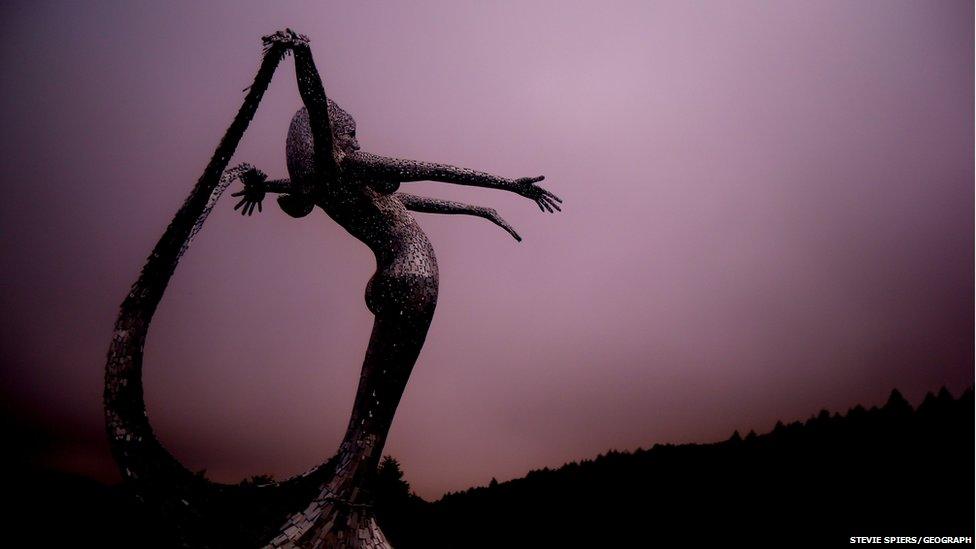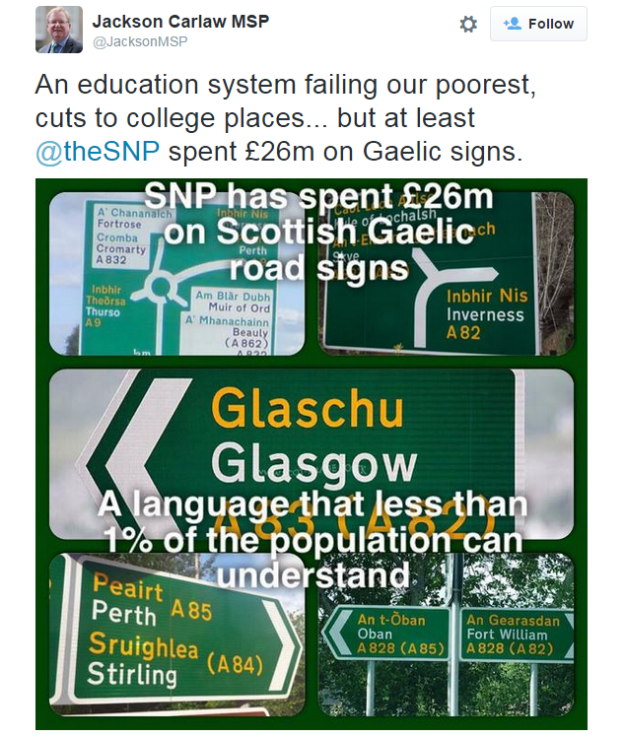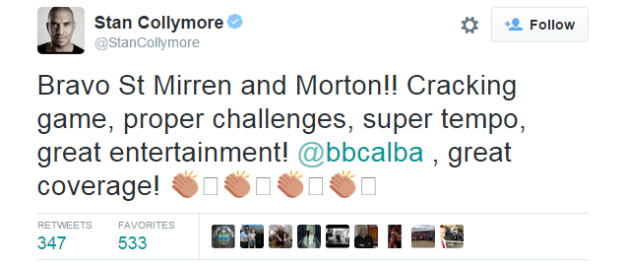Why does Gaelic make people so angry?
- Published

The 32ft Andy Scott sculpture of a woman framed by arcs of water
What's it called - Cumbernauld? OK, but what does it mean?
The standard definition comes from the Gaelic "Comar nan Allt" - "the coming together of the waters".
And a 32ft Andy Scott sculpture of a woman framed by arcs of water even brings the meaning to life every day for drivers on the M80.
Simple enough you might think, but how about putting the Gaelic on the signpost? Now that's a whole other kettle of fish.
Or should that be mermaids? Or indeed maighdeanan mhara? But why do people get so angry about Gaelic?
What is spent on Gaelic?
£28.48m
In 2014-15
-
£6.53m - Education
-
£4m - School infrastructure projects
-
£285,000 - Road signs
Mostly it seems to be a question of money and relevance. A lot of people see Gaelic as not just a minority language but an irrelevant remnant of Scottish history.
Unless of course you're a hillwalker, where the mountains of Scotland are literally alive to the sound of Gaelic place names, external.
Census figures from 2011 put the actual number of speakers at 58,000, with 87,000 people claiming to have some knowledge of the language.
And on the benefits side, Highlands and Islands Enterprise research suggests the use of Gaelic has the potential to generate up to £148.5m a year, external for the economy and tourism.
Meanwhile, the Scottish government also reports an increase in children entering Gaelic medium education.
But it's this disparity between the comparative low level of understanding and the very visible presence on some rail, road and official signage that gets people going.

The signpost debate erupts online in various forms from time to time and the question of the cost and benefits comes up again and again.
Conservative MSP Jackson Carlaw recently tweeted his ire, external over the investment in signs. Indeed the inconsistency over which towns and stations may get a Gaelic translation can be baffling.
The Scottish government sets out plans to promote respect for the visibility of and recognition of Gaelic, external.
A Scottish government spokesperson said: "We do not recognise these figures. The Scottish government spent £28.48m on Gaelic in 2014-15 - this includes £6.53m for education and £4m on school infrastructure projects.
"Transport Scotland invested over £2m between 2003 and 2010 (around £285,000 annually) introducing bilingual signs on roads leading to west coast ferry ports and through Gaelic speaking communities, external. This compares to £4.8bn invested through local authorities to deliver Scottish education in 2013-14."
Meanwhile, the debate rages - and will rage on:
Queen Street or Sràid na Banrighinn?
An Gearasdan or Fort William?
Dingwall or Inbhir Pheofharain?
A-mach or Exit?
Pollokshields West or Pollokshields an Iar?
Whichever way, I guess every cause needs a celebrity backer, and Gaelic TV station BBC Alba may have found one in Stan Collymore, albeit he is speaking the universal language of football.
